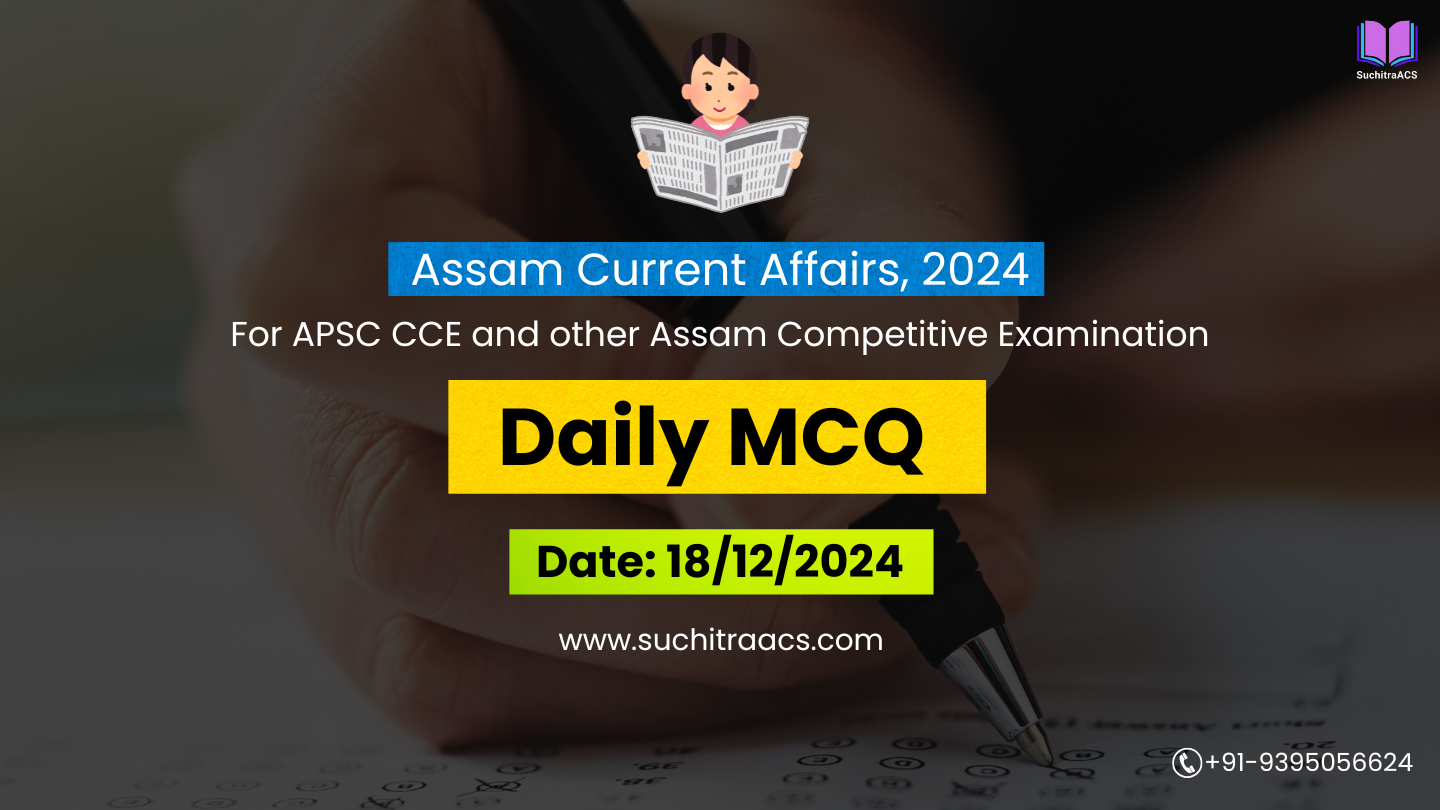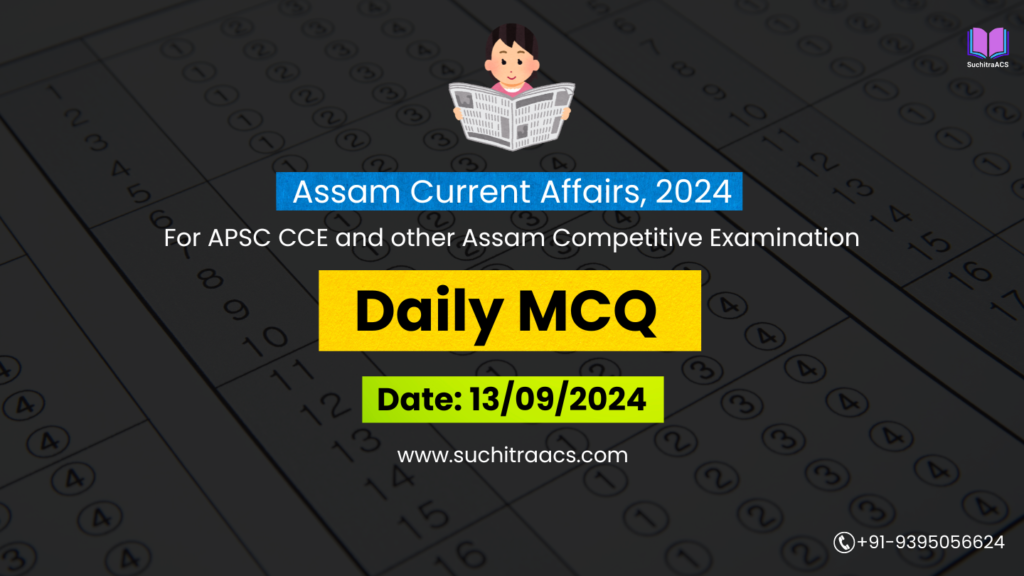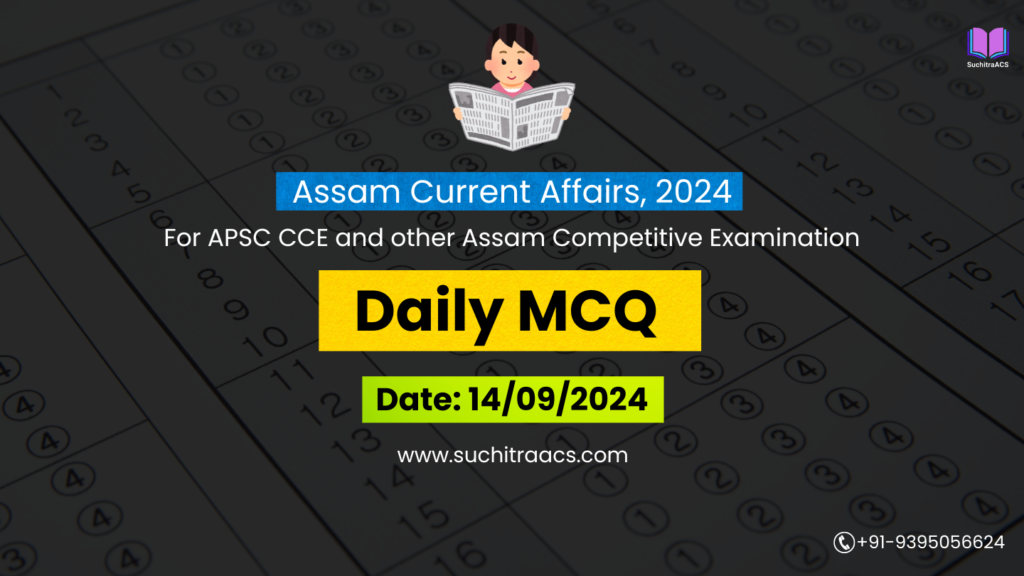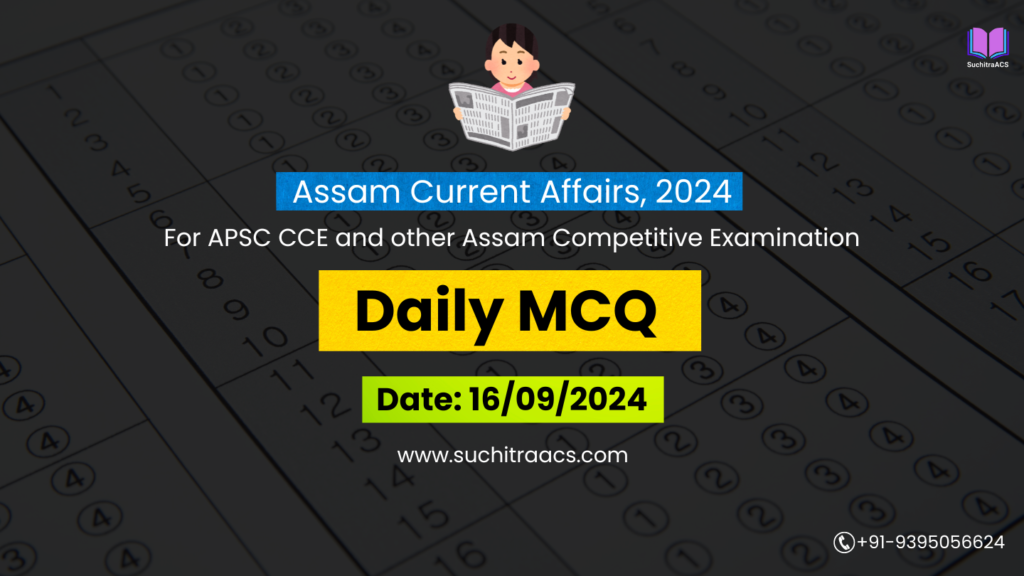APSC MCQs / APSC Prelims Practice Questions based on Assam Tribune (Daily) – 18/12/2024
For APSC CCE and other Assam Competitive examinations aspirants, practicing Daily MCQs is vital. This blog covers most important Prelims questions from the Assam Tribune today (18-12-2024). These issues are key for both APSC Prelims syllabus, offering insights into the important topics of current affairs.
APSC MCQs / APSC Prelims Practice Questions (Date: 18/12/2024)
1. Gauhati High Court Quashes SOP Allowing Animal Fights
Q1. The Prevention of Cruelty to Animals Act, 1960, is primarily aimed at:
a) Regulating the use of animals in scientific research.
b) Preventing unnecessary pain or suffering to animals.
c) Banning all forms of animal-based cultural practices.
d) Promoting animal exports from India.
Answer: b) Preventing unnecessary pain or suffering to animals.
Explanation:
- The Act prohibits cruelty to animals and regulates their care, treatment, and use.
Q2. Which of the following provisions of the Indian Constitution deals with the protection of animals?
a) Article 14
b) Article 48A
c) Article 51A(g)
d) Both b and c
Answer: d) Both b and c
Explanation:
- Article 48A directs the state to protect and improve the environment, including wildlife. Article 51A(g) mandates compassion for living creatures as a fundamental duty.
Q3. Under which schedule of the Wildlife Protection Act, 1972, is the bulbul categorized?
a) Schedule I
b) Schedule II
c) Schedule IV
d) Schedule VI
Answer: b) Schedule II
Explanation:
- Bulbuls are protected under Schedule II, making their capture, hunting, or use for fights illegal.
2. Reviving Assam’s Handloom Industry Through Digital Platforms
Q4. Which of the following silk types is indigenous to Assam and protected under Geographical Indication (GI)?
a) Tussar Silk
b) Eri Silk
c) Muga Silk
d) Both b and c
Answer: d) Both b and c
Explanation:
- Assam is renowned for its Eri (Ahimsa silk) and Muga silk, both having GI tags.
Q5. The Sant Kabir Award is given for excellence in:
a) Traditional handloom weaving.
b) Organic farming techniques.
c) Artistic bamboo handicrafts.
d) Silk production.
Answer: a) Traditional handloom weaving.
Explanation:
- The Sant Kabir Award recognizes outstanding weavers preserving India’s handloom heritage.
Q6. Which state government policy is linked to the revival of traditional textiles and digital promotion?
a) Assam Textile Policy, 2019
b) Assam Handloom Policy, 2024
c) Northeast Weavers Empowerment Policy, 2022
d) Assam Weaver’s Development Scheme
Answer: b) Assam Handloom Policy, 2024
Explanation:
- The Assam Handloom Policy, 2024, focuses on financial aid, skill development, and digitization of handloom products.
3. Assam to Receive 174 MW from Bhutan’s Hydropower Projects
Q7. Which of the following hydropower projects in Bhutan contributes to Assam’s electricity supply?
a) Chhukha and Tala
b) Mangdechhu and Punatsangchhu
c) Punatsangchhu and Kurichu
d) Mangdechhu and Basochhu
Answer: b) Mangdechhu and Punatsangchhu
Explanation:
- Bhutan’s Mangdechhu and Punatsangchhu projects are key contributors to Assam’s renewable energy share.
Q8. Integrated Check Posts (ICPs) serve which of the following purposes?
- Facilitating cross-border trade.
- Strengthening border security.
- Promoting cultural exchange programs.
Select the correct code:
a) 1 and 2 only
b) 2 and 3 only
c) 1 and 3 only
d) 1, 2, and 3
Answer: a) 1 and 2 only
Explanation:
- ICPs are designed to facilitate trade and ensure security but are not intended for cultural exchanges.
Q9. Bhutan contributes nearly what percentage of its export revenue through hydropower trade?
a) 50%
b) 60%
c) 70%
d) 80%
Answer: c) 70%
Explanation:
- Hydropower accounts for 70% of Bhutan’s export earnings, with India being the largest importer.
4. Addressing the Critical Status of Feral Horses in Dibru-Saikhowa National Park
Q10. Dibru-Saikhowa National Park is located in which of the following districts of Assam?
a) Tinsukia and Dibrugarh
b) Jorhat and Sivasagar
c) Golaghat and Sonitpur
d) Dhemaji and Lakhimpur
Answer: a) Tinsukia and Dibrugarh
Explanation:
- Dibru-Saikhowa National Park spans Tinsukia and Dibrugarh districts in Assam.
Q11. Feral horses in Dibru-Saikhowa trace their origin to:
a) Wild horses native to the Brahmaputra plains.
b) Horses abandoned by the British Army during World War II.
c) Domesticated horses released during Ahom rule.
d) Captured animals from Myanmar.
Answer: b) Horses abandoned by the British Army during World War II.
Explanation:
- The feral horses were left behind by the British Army and have since adapted to the wild.
Q12. The National Green Tribunal (NGT) is tasked with:
a) Reviewing environmental disputes and conserving wildlife.
b) Providing disaster relief during environmental calamities.
c) Drafting India’s biodiversity action plans.
d) Conducting scientific studies on environmental changes.
Answer: a) Reviewing environmental disputes and conserving wildlife.
Explanation:
The NGT adjudicates cases related to environmental protection and conservation.
 APSC Prelims Crash Course, 2025
APSC Prelims Crash Course, 2025
at most affordable rate in Assam!

🔔 Join Our WhatsApp Study Group!
For exclusive access to premium quality content, including study materials, current affairs, MCQs, and model answers for APSC CCE and other Assam competitive exams.
Click here to join: SuchitraACS Study WhatsApp Group
📚 Want to know more about SuchitraACS’s most affordable courses?
Click here to know more: SuchitraACS Courses for APSC CCE and Assam Competitive Examinations




